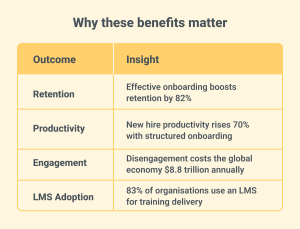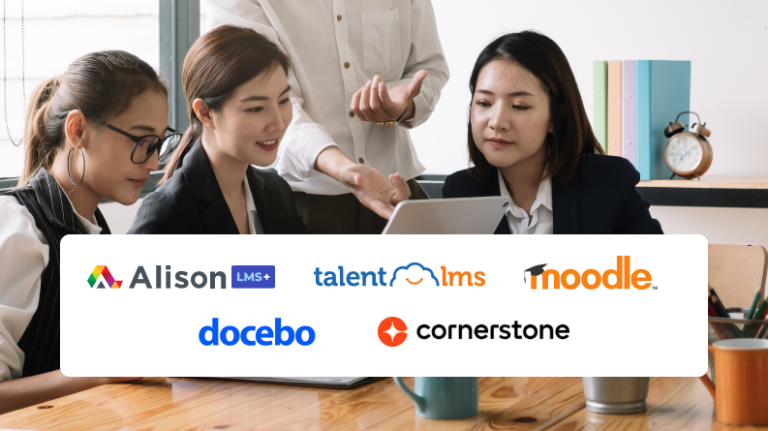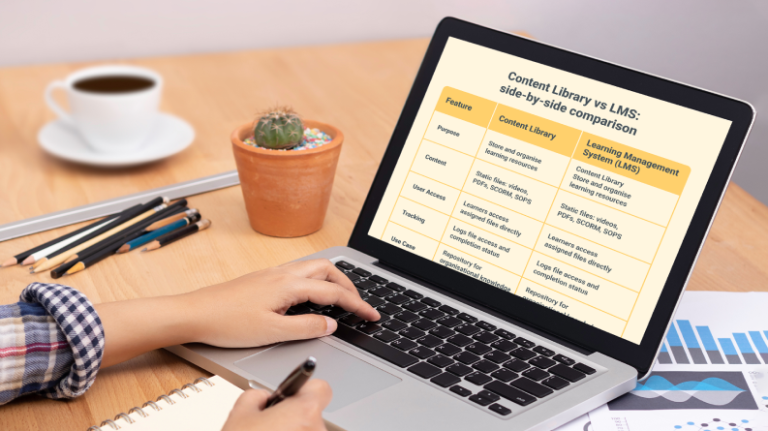For years, organisations have struggled with a common problem: too much information scattered across too many platforms. From training videos sitting in cloud drives to onboarding manuals lost in email threads, employees often waste valuable time trying to track down the right resources. This inefficiency doesn’t just create frustration; it also slows down learning, increases policy risks, and undermines engagement.
A digital Content Library solves this challenge by providing a central hub for storing, organising, and distributing essential training materials. When built into a Learning Management System (LMS), it ensures that employees can access the right content at the right time, whether they’re new hires getting started or seasoned professionals brushing up on company policies. The Content Library is a centralised hub where all your organisation’s learning and training materials live. Instead of juggling scattered folders, emails, and separate platforms, everything is stored in one secure, accessible place. This makes it easier for employees to find the right information when they need it, supporting both structured training and self-directed learning.
In this article, we’ll explore five ways a digital content library improves employee learning, strengthens training programmes, and enhances the overall employee experience.
1. Centralising Training Resources In One Place
Centralising training resources in a single Content Library doesn’t just make life easier for administrators; it directly impacts how employees learn. When materials are scattered across folders, platforms, and email threads, employees waste valuable time searching for what they need. This delays learning, reduces motivation, and increases the chance they’ll reference outdated information.
By providing one secure, centralised source of truth, employees can access the right materials at the right time. Whether they need to quickly refresh their knowledge before a task, complete compliance training, or explore additional learning paths, everything is available in one place. This reduces barriers to learning, encourages consistency, and fosters a smoother, more confident learning experience.
In turn, employees spend less energy navigating systems and more time actually engaging with learning materials. Over time, this supports stronger knowledge retention, better application of skills on the job, and a culture of continuous learning across the organisation.
2. Streamlining Onboarding For New Hires
Onboarding is a critical stage in the employee lifecycle. Research consistently shows that a well-structured onboarding programme improves retention, boosts confidence, and accelerates time-to-productivity.
- Organisations with strong onboarding see up to 82% higher retention
- Structured onboarding can improve new hire productivity by 70%
With a digital Content Library, new hires receive a clear and structured pathway through their onboarding journey. On day one, they can access essential materials such as:
- A welcome video from leadership
- An employee handbook and company values
- Role-specific training guides
- Tutorials for software and tools
- Policy and safety procedures
New employees can dive into learning once managers have assigned the relevant files to them. This system lets the manager know that the new employees are seeing the files that are necessary to them and not every document in the library.
3. Supporting Compliance And Policy Awareness
Policy training is often seen as a box-ticking exercise, yet failing to meet regulatory requirements can carry serious consequences. Whether it’s health and safety standards, data protection regulations, or industry-specific certifications, employees need access to the latest information, and organisations need to demonstrate that training has been delivered and understood.
A digital Content Library supports this by making policy documents easy to assign, track, and update. Administrators can:
- Upload the latest policies and handbooks
- Assign them to specific teams or individuals
- Track who has accessed the content and when
- Generate insights into completion and engagement
The tracking feature is particularly powerful. Managers can quickly identify employees who have not yet completed mandatory training and follow up accordingly. Instead of relying on guesswork, L&D teams gain visibility into employee progress, reducing risk and ensuring accountability.
For employees, the benefit is equally clear. Instead of searching for the correct policy version or wondering whether they’ve completed the required training, they have everything organised in one accessible location and ultimately will have workplace confidence. This transparency builds trust and reduces uncertainty.
4. Enhancing LMS Integration And Learning Paths
When a digital Content Library is built into an LMS, the impact on employee learning is transformative. Rather than simply acting as a storage system, the library becomes an active part of the learning journey.
At least 83% of organisations already use an LMS for training delivery. Having a Content Library built into your LMS enables:
- Personalised learning paths: Employees only see content relevant to their role, team, or career goals.
- Blended learning opportunities: Digital resources can complement instructor-led training, creating a more engaging experience.
- Scalable training delivery: As organisations grow, content can be assigned to larger groups without losing consistency.
When updates are made, documents must be reassigned to the employees. This is also a good way of ensuring that all employees are kept up to date on any changes made to policies.
5. Encouraging Continuous Learning And Engagement
Learning shouldn’t stop once onboarding is complete or policy boxes are checked. The most effective organisations foster a culture of continuous learning, where employees are encouraged to expand their knowledge, upskill, and explore new areas of development. (Gallup.com)
Globally, employee disengagement costs the economy $8.8 trillion in lost productivity every year. Giving employees the tools to learn on demand can significantly counteract this trend.
A digital Content Library supports this by making resources available anytime and anywhere. Team members don’t have to wait for formal training sessions or request files from managers. Instead, they can access the learning materials that have been assigned to them by admins, whether it’s brushing up on communication skills, reviewing leadership frameworks, or deepening technical expertise. This system also has the benefit of measuring training effectiveness and impact.
This structured accessibility supports self-directed learning within defined parameters, empowering employees to take ownership of their professional development. Over time, this creates a workforce that is more engaged, motivated, and equipped with the skills needed to adapt to changing business environments.
Why These Benefits Matter

These figures show that a digital Content Library isn’t optional or nice-to-have; it’s a strategic investment that affects retention, productivity, and engagement.
Final Thoughts And Next Steps
The introduction of a Content Library is not just about convenience. It represents a strategic shift in how organisations approach learning, training, and policy. By centralising resources, streamlining onboarding, ensuring employee retention, integrating with LMS platforms, and encouraging continuous learning, businesses can create a smarter, more efficient training ecosystem.
If you’re exploring how to make your training programmes more effective, now is the time to consider integrating a digital content library into your LMS. To see how this feature works in practice, take a look at our LMS integration resources and browse our technical guides.
By investing in a modern learning management platform with Content Library today, you’re laying the foundation for a more skilled, engaged, and future-ready workforce.









